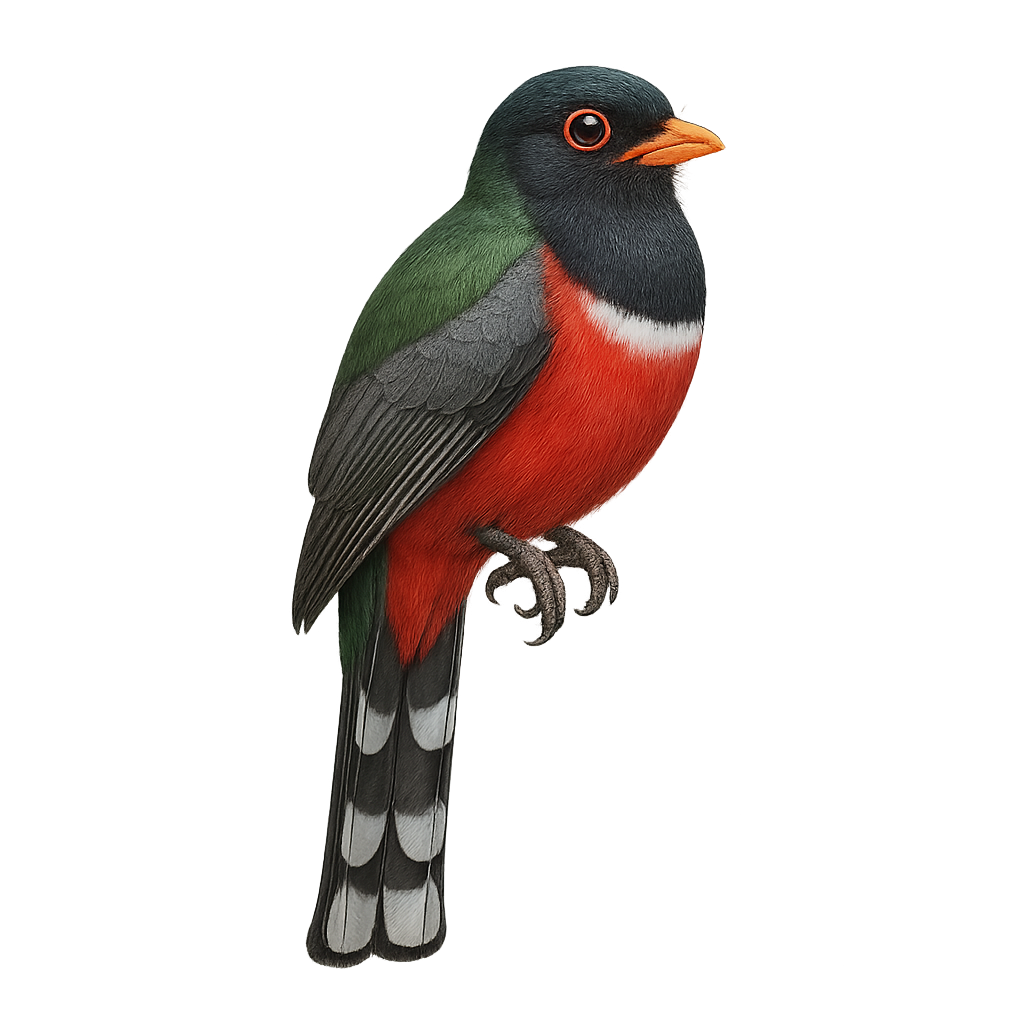Your wildlife photography guide.
Explore the masked trogon in detail, study its behavior, prepare your shots.
Where to observe and photograph the masked trogon in the wild
Learn where and when to spot the masked trogon in the wild, how to identify the species based on distinctive features, and what natural environments it inhabits. The WildlifePhotographer app offers tailored photography tips that reflect the masked trogon’s behavior, helping you capture better wildlife images. Explore the full species profile for key information including description, habitat, active periods, and approach techniques.
Masked Trogon
Scientific name: Trogon personatus

IUCN Status: Least Concern
Family: TROGONIDAE
Group: Birds
Sensitivity to human approach: Suspicious
Minimum approach distance: 10 m
Courtship display: September to November
Incubation: 17-19 jours
Hatchings: September to December
Habitat:
Tropical forests, humid forests, montane woodlands
Activity period :
Primarily active during the day, with peak activity in the morning and late afternoon.
Identification and description:
The Masked Trogon is a fascinating bird primarily inhabiting the tropical forests of South America. It is easily recognizable by its colorful plumage, featuring a bright green back, red chest, and white belly. Its head is adorned with a distinctive black mask, giving it its name. This bird prefers dense habitats where it can blend in with the foliage. It feeds mainly on insects and fruits, which it captures with agility thanks to its swift and precise flight. The Masked Trogon is often seen in pairs or small groups, and its melodious song resonates through the canopy.
Recommended lens:
400 mm – adjust based on distance, desired framing (portrait or habitat), and approach conditions.
Photography tips:
To photograph the Masked Trogon, it is advisable to use a telephoto lens of at least 400mm to capture detailed images without disturbing the bird. Look for it early in the morning when the light is soft and it is most active. Be patient and discreet, as this bird can be suspicious. Wear neutral-colored clothing to blend in better with the environment. Try to capture its distinctive profile, highlighting its black mask and colorful plumage.
The WildlifePhotographer App is coming soon!
Be the first to explore the best nature spots, track rutting seasons, log your observations, and observe more wildlife.
Already 1 430 wildlife lovers subscribed worldwide

